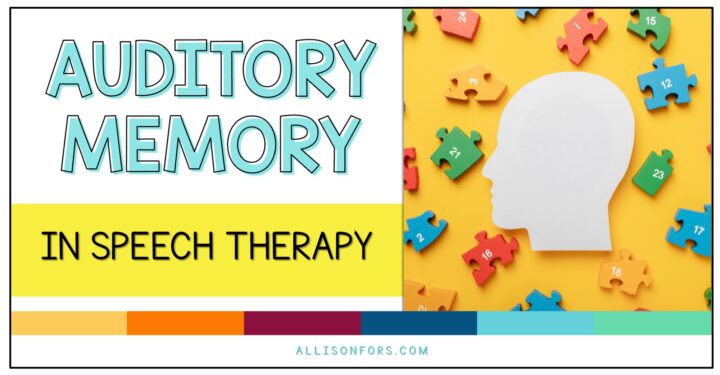
Making the Shift to Neurodiversity-Affirming Practice

Welcome and thanks to my guest blogger, Semona! Today, she shares tips on neurodiversity-affirming practice in speech therapy.
Semona is a pediatric speech-language pathologist with clinical experience working with autistic children and the birth to three populations. She is the owner of Let’s Tok Speech Therapy in Toronto, Canada, providing virtual and in-home speech therapy for families in the area seeking additional support in early intervention, social communication, and speech sound disorders. Her mission is to foster “connection over correction” by honoring the unique differences, strengths, and values of each and every child, striving to cultivate an inclusive environment where children of all types of brains feel welcomed and valued.
What is Neurodiversity-Affirming Practice?
Delving into the neurodiversity movement opens up a world where every brain is celebrated for its unique wiring, strengths, and differences. Neurodiversity encompasses all types of brains, including those with ADHD, learning disabilities, etc., but it is often used in the context of autism.

Historically speaking, autism was viewed as a condition to be treated. Traditional therapy methods, such as Applied Behavior Analysis (ABA), focused on altering observable behaviors to align more closely with societal norms (e.g., training them to maintain eye contact at all times). But now, autism has increasingly been celebrated as an identity involving distinct ways of thinking and interacting with others. The neurodiversity movement challenges this one-size-fits-all mentality, asserting that autism is not a disorder to be corrected, but a different way of experiencing the world. Adopting this mindset means recognizing that autistic children have differences, not deficits.
Moving beyond a deficit model, the neurodiversity framework invites us to appreciate autistic children for their distinct way of experiencing life, reshaping the way therapy is designed and delivered when leaving a meaningful impact on the lives of the families served. This shift involves creating environments that are more accommodating and facilitating learning experiences tailored to the individual needs of autistic individuals. For example, instead of discouraging stimming (e.g., repetitive movements or sounds such as hand flapping, rocking back and forth, jumping), neurodiversity-affirming professionals view this as a valid form of self-regulation, particularly in managing sensory overload or expressing oneself when verbal communication is challenging. Similarly, acknowledging that eye contact can be distressing for some autistic individuals prompts a shift away from enforcing eye contact and towards accepting this difference.
By doing so, we not only cultivate a supportive therapeutic relationship that honors the autistic child for who they are, but also contribute to fostering a healthier sense of identity. Neurodiversity-affirming practice recognizes the diverse ways in which autistic children experience the world and prioritizes their strengths, sensory preferences, and interests. By reevaluating our therapeutic methods through this lens, we are paving the way for a more compassionate, inclusive, and empowering paradigm.

5 Tips for Fostering Neurodiversity
Here are five simple-to-implement tips if you are looking to adopt a neurodiversity-affirming approach when working with autistic children:
1. Respect Their Sensory Preferences:
The majority of autistic children experience sensory challenges. Each autistic child has a unique sensory profile, and acknowledging and accommodating these preferences can enhance their comfort and engagement in a variety of situations and environments. Creating a sensory-friendly space in collaboration with an occupational therapist (OT) can significantly enhance their regulation, engagement, and overall comfort. Whether it involves creating sensory-friendly spaces, providing alternatives for sensory stimuli, or understanding their sensory preferences while playing, fostering an environment that respects and responds to the individual needs of autistic children is crucial. By recognizing and validating their sensory experiences, we not only demonstrate empathy but also empower these children to navigate the world with a greater sense of agency while feeling safe and regulated on the inside.
2. Engage in Continuous Learning:
Stay informed about the latest research and practices related to the neurodiversity-affirming approach. Being informed about neurodiversity will enhance your ability to adapt and evolve your therapeutic strategies in a way that makes autistic children feel heard, valued, and accepted. Attend workshops, sign up for evidence-based courses, engage in continuous learning with other like-minded professionals, and be open to integrating new approaches that align with the principles of neurodiversity.
Here are my personal favorites:
Meaningful Speech
https://www.meaningfulspeech.com/course
Neurodiversity CE Summit through Learn Play Thrive
https://learnplaythrive.com/summit/
Autism and Neurodiversity in Early Childcare Program (free) through UBC
https://circa.educ.ubc.ca/autism-and-neurodiversity-in-early-childcare/
3. Promote Social Communication Opportunities:
Encouraging autistic children to participate in social interactions is crucial so they can learn to nurture their interpersonal skills and foster meaningful connections in an inclusive environment. This can involve planning theme-based social activities, peer group interactions, or role-playing scenarios while emphasizing the importance of respecting their diverse learning styles, sensory profiles, and strengths.
4. Don’t Make Assumptions:
Rather than making assumptions, it is always best practice to ask. For example, although most autistic individuals prefer identity-first language (i.e., autistic person), some may actually prefer person-first language instead (i.e., a person with autism). Be sure to establish a collaborative relationship with families and other professionals as part of a child’s circle of care to ensure consistent support, learn more about culturally-relevant information, and gather a more holistic picture. Actively involve families in goal-setting, parent coaching, etc. And provide them with practical, easy-to-use strategies to reinforce communication skills at home while also inviting their input, free of any assumptions or judgment.
5. Teach Self-Advocacy Skills:
Teaching autistic children how to advocate for themselves involves doing some “detective work” first to figure out their preferences and dislikes. A critical element of aligning therapy with neurodiversity principles is encouraging independence and self-advocacy. This involves empowering individuals to recognize and communicate their needs effectively. Whether it is requesting a sensory break in an overstimulating environment, refusing to participate in a non-preferred activity, or seeking support when facing a challenging task. By providing opportunities for building their “self-advocacy muscles,” we equip them with invaluable skills for navigating various social challenges while staying true to their autistic identity with unwavering confidence.
Embracing neurodiversity is about fostering connection, understanding, and acceptance when working with autistic children. By respecting their sensory preferences, staying informed of the latest research, promoting healthy social interactions, avoiding the common mistake of making assumptions, and teaching self-advocacy skills, we can create an inclusive and empowering environment for autistic children. Let’s continue to champion neurodiversity and advocate for the unique strengths and differences of every autistic child we serve. Together, we can make a meaningful difference, one session at a time!
Thank you, Semona, for sharing such helpful tips for making the shift to creating a neurodiversity-affirming practice! You can find Semona at https://www.letstokslp.com/ and on Instagram: @letstokspeechtherapy
Email: [email protected]
Are you interested in being a guest blogger? Fill out this form!






